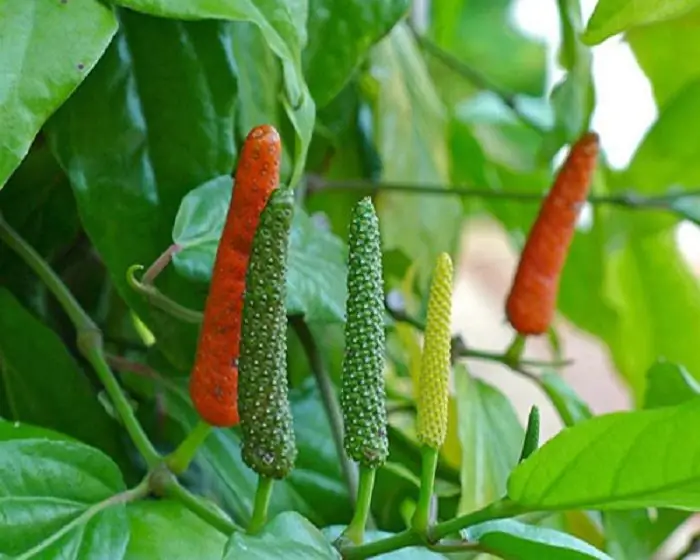2026 Author: Howard Calhoun | [email protected]. Last modified: 2025-01-24 13:10:43
Cotton is one of the finest organic materials throughout human history, used in a variety of industries. The main consumer of fiber is the textile industry, which cannot be imagined without cotton. Fabrics made from this material have excellent characteristics.
Cotton remains in demand over time, as it was many centuries ago.
Description
Cotton is a fiber of plant origin that envelops the seeds of the cotton plant. It is one of the most important and widespread crops around the world. It occupies a leading position as the basis for the production of fabrics. There are dozens of species of this plant.
According to external characteristics, cotton grows like a shrub. The similarity is due to the presence of branches and leaves. A good example is the following photo of cotton.

In fact, cotton, depending on the species, is a woody or herbaceous plant. It takes root only in hot countries, it needs a warm and humid climate. Its height ranges from one meter toone and a half meters. The flowers of the plant with their color also differ in varietal characteristics, they can be pollinated independently. The fruit is a cotton boll in which seeds and fibers ripen.
History
In order to find out how cotton grows, it is useful to read a little historical background about it.
Cultivation of cotton has a long history. This is confirmed by excavations of ancient settlements. The country that started the development of cotton is India. It was there that the oldest samples of material and tools for its processing were found. Further, cotton fiber became widespread in Greece and the Arab countries. Excavations in China, Persia, Mexico, and Peru also speak of the cultivation of cotton several millennia BC.
From the countries that grow the crop, cotton products have spread to Asia and America. Independent cultivation of cotton by these countries began much later.
Before cultivation began in Europe, there were many legends about how cotton grows. Several variants of names in different cultures have survived to this day, as well as images of a cotton tree according to people's ideas.

Cotton cultivation
The maturation period of cotton fiber varies depending on the variety: from 100 to 200 days.
Cotton fiber requires well-prepared, porous soil. The presence of nutrients in it is of great importance for the full growth of the plant. Therefore, the land before sowing is enriched withvarious fertilizers.
Warm climate conditions also play a huge role. Seeds can germinate at a temperature not lower than 15 degrees. For development and further flowering, the temperature should reach 30 degrees. Cotton needs open access to sunlight. In the shade, the plant may die.
Cotton uses a lot of water. Providing the plant with moisture should occur abundantly and constantly. At the same time, cotton is able to tolerate drought due to a well-developed root system. But under such conditions, the amount of the crop is reduced.
Cotton ripening on the plant is uneven, so the harvest takes place in several stages. Often, leaves are removed from it before harvesting, which can interfere with the harvesting process.

After the maturation of the fiber box, it opens. Cotton picking begins, which is carried out mechanically or manually. Boxes of ripe fiber, along with seeds, are plucked from the plant. Further, the raw material is cleaned from seeds, dust and debris, and transported to its destination.
Properties
Cotton fiber has a number of positive properties:
- absorbs moisture well;
- does not cause allergies;
- warms, keeps warm;
- high air permeability;
- does not require complicated care;
- has a low cost;
- comfortable when sewing various clothes.
Cotton also has several negative properties:
- no added synthetic fabricswrinkle, stretch and thin;
- quickly loses color with a lot of sunlight;
- loses properties after prolonged contact with water.
Application
Cotton fiber is used in various areas of human life.
First of all, cotton is used in the textile industry. From it fabrics of various characteristics and colors are produced. For example, satin, flannel, chintz and many others. Cotton fiber is used in the manufacture of threads, yarn, wadding, paper and even explosives.

Cotton seeds are also used in industry. Some of them are being prepared for further landing. From the rest of the seeds, oil is squeezed out, which is eaten. Low quality oil is used for technical purposes. The raw material left after oil extraction is rich in protein, so animal feed is made from it.
From dozens of varieties of cotton, several types are used for the manufacturing industry.
Information about how cotton grows, about its application in industry is interesting and important. This plant has played a large role in the history of mankind for many centuries.
Recommended:
Acetate fiber. Production of acetate fiber

At all times, the textile industry has been one of the most important sectors of the national economy in our country, as it gave the state a huge amount of much-needed fabric, which was constantly required not only for the production of clothing, but even used in the production of weapons
Carbon fiber: properties, photo, obtaining, use

The article is about carbon fiber. The technology of obtaining, the properties of the material, as well as the scope and forms of application are considered
Long pepper: types, varieties, cultivation features, recipes with its use, medicinal properties and uses

Long pepper is a popular product that has found wide application in many industries. There are many varieties of peppers. This culture has a beneficial effect on the human body and has a wide spectrum of action. It is used in the food industry and traditional medicine
Cotton oil: useful properties of the product

Cotton oil is produced from the cotton plant by seed pressing or extraction. The fat content in the seeds is small, it rarely exceeds 25%. With the help of pressing, only 16-18% of the product can be squeezed out. Such a low yield is compensated by the fact that cotton seeds are a waste of cotton production, they are very cheap
Why does the ruble depend on oil and not on gas or gold? Why does the ruble exchange rate depend on the price of oil, but the dollar exchange rate does not?

Many in our country are wondering why the ruble depends on oil. Why is it that if the price of black gold decreases, the price of imported goods rises, is it more difficult to get out to rest abroad? At the same time, the national currency becomes less valuable, and with it, all savings

